“Simple Ways To Enjoy Your Homegrown Pomegranates”
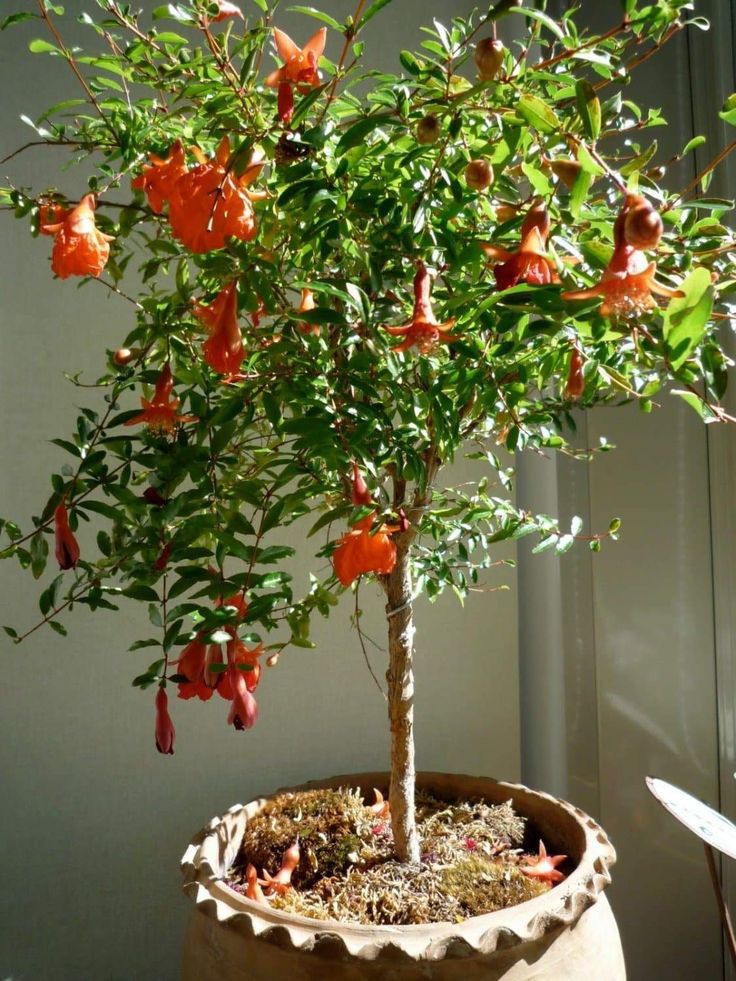
Introduction to the World of Dwarf Pomegranate Trees
The dwarf pomegranate tree is a gem that has been capturing the imagination of garden enthusiasts. These compact wonders offer a blend of beauty and utility. They are popular for gardeners with limited space or seeking a landscape addition.
Imagine a tree that fits in small gardens and container spaces. It provides stunning appeal with flowers, foliage, and fruit production. Dwarf pomegranate trees are miniature versions of their full-sized counterparts. They pack an incredible amount of charm and functionality into a small package.
Understanding Dwarf Pomegranate Trees: Origins and Characteristics
What Exactly is a Dwarf Pomegranate Tree?
The dwarf pomegranate tree is known as Punica granatum. It is a miniature version of the pomegranate tree that has captivated gardeners and plant enthusiasts. This compact marvel reaches a height of 3 to 6 feet. It is an option for gardens with limited space, container plantings, and indoor cultivation.
Botanical Classification and Origin
The dwarf pomegranate tree traces its roots to the Mediterranean and Middle Eastern regions. It is popular in Iran, Afghanistan, and parts of the Indian subcontinent. These regions have cultivated pomegranate trees for thousands of years. There is archaeological evidence suggesting their cultivation dates back to around 3000 BCE.
Key characteristics that distinguish dwarf pomegranate trees include:
- Compact growth habit that makes them perfect for small gardens
- Ornamental flowers in vibrant shades of orange-red
- Miniature fruit production that is both decorative and edible
- High adaptability to various growing conditions
- Extended flowering and fruiting periods
Size and Growth Characteristics
Standard pomegranate trees grow up to 20-30 feet tall. Dwarf pomegranate trees maintain a more manageable size:
- Height range: 3-6 feet
- Spread: 2-4 feet wide
- Growth rate: Slow to moderate
- Lifespan: 15-25 years with proper care
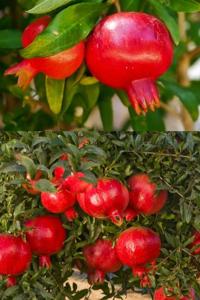
Varieties of Dwarf Pomegranate Trees
Popular Varieties
- Punica granatum ‘Nana’
- The most common dwarf variety
- Excellent for ornamental purposes
- Produces small, decorative fruits
- Thrives in containers and small garden spaces
- Ornamental Compact Varieties
- Bred for aesthetic appeal
- Featuring vibrant flower colors
- Less focus on fruit production
- Ideal for landscape design and decorative gardens
- Fruit-Bearing Dwarf Varieties
- Developed to produce smaller edible fruits
- Compact growth characteristics
- Suitable for gardeners wanting both beauty and utility
- Need care to maximize fruit production
Unique Characteristics of Each Variety
Each dwarf pomegranate tree variety offers something special:
- ‘Nana’ variety: Known for its robust nature and adaptability
- Ornamental types: Showcase stunning flower displays
- Fruit-bearing variants: Provide a small harvest of nutrient-rich fruits
Dwarf pomegranate trees offer gardeners a combination of beauty, functionality, and intrigue.
Planting and Growing Dwarf Pomegranate Trees
Ideal Growing Conditions
Cultivating a dwarf pomegranate tree requires understanding its preferences. These plants thrive in growing conditions that mimic Mediterranean and Middle Eastern habitats.
Sunlight Requirements
Dwarf pomegranate trees are sun-loving plants that demand much light exposure:
- Full sun: Minimum of 6-8 hours of direct sunlight daily
- Ideal placement: South or southwest-facing locations
- Light tolerance: Can handle afternoon shade in hot climates
- Indoor growing: Requires indirect light near south-facing windows
Soil and pH Preferences
The right soil composition is important for dwarf pomegranate tree success:
- Soil type: Well-draining, loamy soil
- Optimal pH range: 5.5-7.0 (acidic to neutral)
- Soil composition:
- 60% garden soil
- 20% compost
- 20% sand or perlite for enhanced drainage
- Avoid: Heavy clay soils that keep excessive moisture
Climate and Hardiness Zones
Understanding your local climate is essential for dwarf pomegranate tree cultivation:
- Hardiness zones: USDA zones 7-10
- Temperature tolerance:
- Ideal range: 60-85°F
- Minimum winter temperature: No lower than 10°F
- Cold protection: Required in zones 7-8
- Heat tolerance: Excellent performance in warm, dry climates
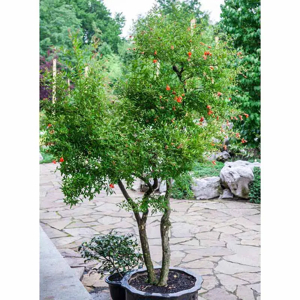
Step-by-Step Planting Guide
Best Planting Time
- Spring: Ideal planting season
- Late winter: Alternative planting window in mild climates
- Avoid: Extreme heat or freezing temperatures
Soil Preparation
- Site selection
- Choose a location with full sun
- Ensure excellent drainage
- Protection from strong winds
- Soil preparation steps
- Remove existing vegetation
- Loosen soil to 12-inch depth
- Incorporate organic compost
- Test and adjust soil pH if necessary
Planting Techniques
Container Planting
- Pot size: 12-16 inches in diameter
- Drainage: Many holes at the bottom
- Soil mix:
- Commercial potting soil
- Added perlite for drainage
- Placement: Sunny patio or balcony
Ground Planting
- Spacing: 4-6 feet between trees
- Planting depth:
- Same depth as the nursery container
- Avoid burying the trunk too deep
- Mulching: 2-3 inch layer around base
- Prevents moisture loss
- Regulates soil temperature
Planting Step-by-Step
- Dig a hole twice the width of the root ball
- Ensure proper drainage
- Remove the tree from the container
- Place in the hole, keeping root crown at ground level
- Backfill with prepared soil
- Water
- Add a layer of mulch
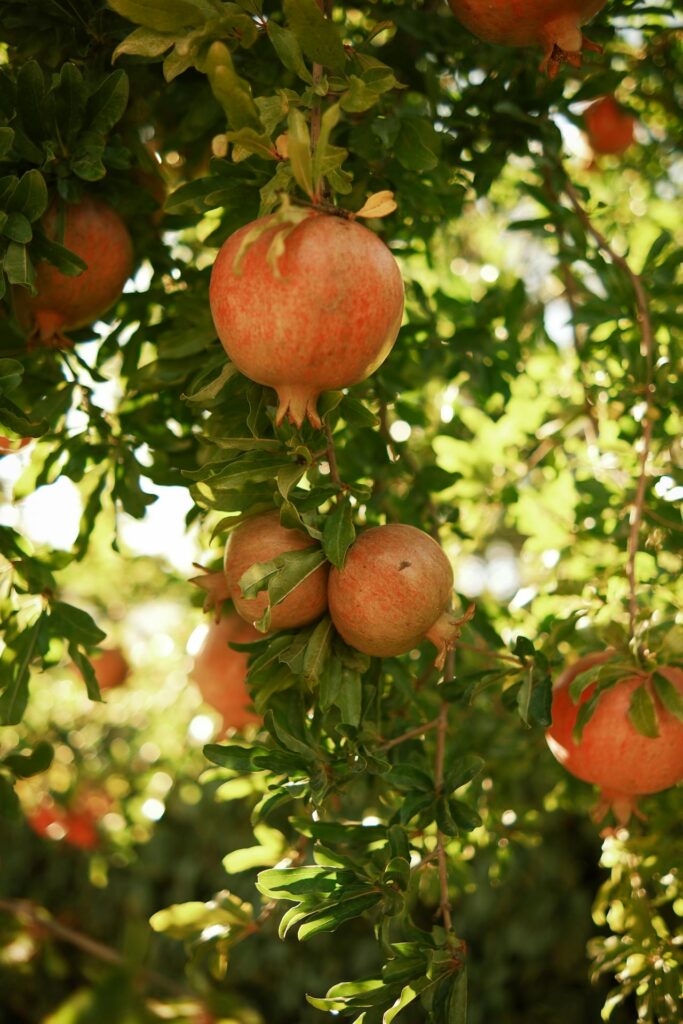
Care and Maintenance of Dwarf Pomegranate Trees
Watering Needs: Nurturing Your Compact Botanical Treasure
Understanding the watering requirements of a dwarf pomegranate tree is important for its long-term health and vigor. These resilient plants have developed adaptations to survive in semi-arid environments.
Watering Frequency and Techniques
The key to watering lies in mimicking the tree’s natural Mediterranean habitat. The periodic deep watering is followed by allowing the soil to dry between irrigation cycles.
Watering Guidelines:
- Young trees: 2-3 times per week
- Established trees: Once per week
- Container trees: More frequent watering due to limited soil volume
- Seasonal adjustments: Reduce watering in winter, increase during active growth periods
Drought Tolerance and Water Management
Dwarf pomegranate trees have impressive drought-resistant characteristics:
- Natural adaptation: Developed in Mediterranean and Middle Eastern regions
- Root system: Compact but efficient water extraction
- Survival mechanism: Can tolerate short periods of water scarcity
- Water conservation: Reduced leaf transpiration during dry periods
Signs of Water Stress
Recognizing water-related issues is critical for maintaining tree health:
Underwatering Indicators:
- Drooping or curling leaves
- Premature leaf drop
- Stunted growth
- Dry, crisp leaf edges
Overwatering Symptoms:
- Yellowing leaves
- Root rot
- Fungal growth near the base
- Persistent soil moisture
- Weak, wilted appearance

Fertilization Strategies: Nourishing Your Dwarf Pomegranate Tree
Proper fertilization ensures robust growth, vibrant flowering, and fruit production in your dwarf pomegranate tree.
Nutrient Requirements
Essential Nutrients:
- Nitrogen: Promotes leaf and branch growth
- Phosphorus: Supports root development and flowering
- Potassium: Enhances plant health and fruit production
- Micronutrients: Iron, zinc, and magnesium for metabolic processes
Fertilizer Selection
Recommended Fertilizer Types:
- Balanced Organic Fertilizers
- Slow-release formulations
- 5-5-5 or 10-10-10 NPK ratios
- Compost and well-aged manure
- Gradual nutrient distribution
- Specialized Fruit Tree Fertilizers
- Higher phosphorus content
- Tailored for flowering and fruiting
- Reduced nitrogen to prevent excessive foliage growth
Fertilization Schedule
Seasonal Application:
- Early Spring: First application as new growth emerges
- Late Spring: Second light application
- Mid-Summer: Optional supplemental feeding
- Avoid: Late-season fertilization to prevent new growth vulnerability
Organic vs. Synthetic Options:
- Organic Fertilizers
- Slower nutrient release
- Improves soil structure
- Environmentally friendly
- Less risk of nutrient burn
- Synthetic Fertilizers
- Rapid nutrient availability
- Precise nutrient ratios
- Quick results
- Higher risk of over-fertilization

Pruning and Shaping: Artistic Management of Your Dwarf Pomegranate Tree
Pruning is both a science and an art.
Pruning Techniques
Optimal Pruning Times:
- Late winter/early spring before new growth
- After the fruiting cycle completion
- Avoid pruning during active growth periods
Pruning Goals:
- Maintain compact shape
- Remove dead or diseased branches
- Encourage air circulation
- Stimulate flowering and fruiting
Essential Pruning Tools:
- Sharp, clean pruning shears
- Bypass pruners
- Pruning saw for larger branches
- Rubbing alcohol for tool sterilization
Common Pruning Mistakes to Avoid:
- Over-pruning
- Improper cut angles
- Using dull or dirty tools
- Pruning during inappropriate seasons
Pest and Disease Management for Dwarf Pomegranate Trees
Understanding Potential Threats to Your Dwarf Pomegranate Tree
Protecting your dwarf pomegranate tree requires a proactive and comprehensive approach. By understanding threats and strategic prevention you ensure long-term health and vitality.
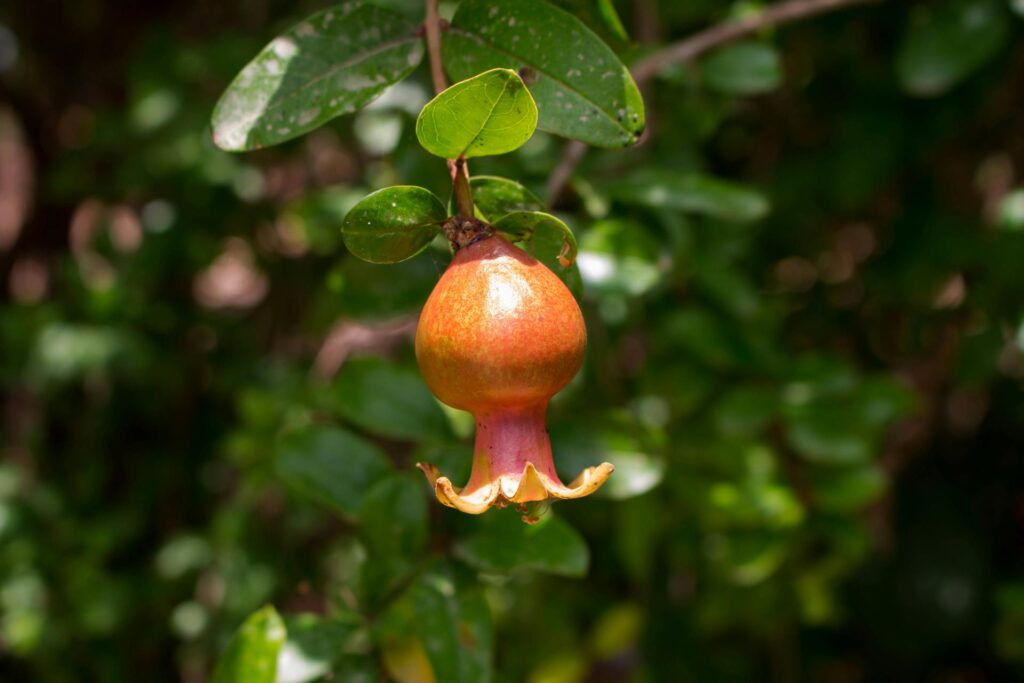
Common Pests: Identification and Control Strategies
Dwarf pomegranate trees attract insects that threaten their health and productivity. Early detection and intervention help to maintain a thriving tree.
Primary Pest Categories:
- Sap-Sucking Insects
- Aphids: Tiny green or black insects
- Scale insects: Small, immobile creatures on branches
- Spider mites: Microscopic pests causing leaf discoloration
- Damage potential: Weakens tree, reduces photosynthesis
- Chewing Insects
- Leaf-eating beetles
- Caterpillars
- Grasshoppers
- Damage potential: Direct leaf and fruit destruction
- Soil-Based Pests
- Root weevils
- Nematodes
- Grubs
- Damage potential: Underground root system destruction
Prevention and Control Methods
Natural Control Strategies:
- Beneficial insect introduction
- Ladybugs
- Lacewings
- Predatory wasps
- Neem oil treatments
- Insecticidal soaps
- Proper tree spacing
- Regular inspection
Chemical Control Options:
- Targeted systemic insecticides
- Horticultural oils
- Copper-based fungicides
- Careful application following manufacturer instructions
Early Infestation Detection
Warning Signs:
- Leaf discoloration
- Stippled or mottled leaf surfaces
- Visible insect clusters
- Webbing on leaves
- Stunted growth
- Premature leaf drop
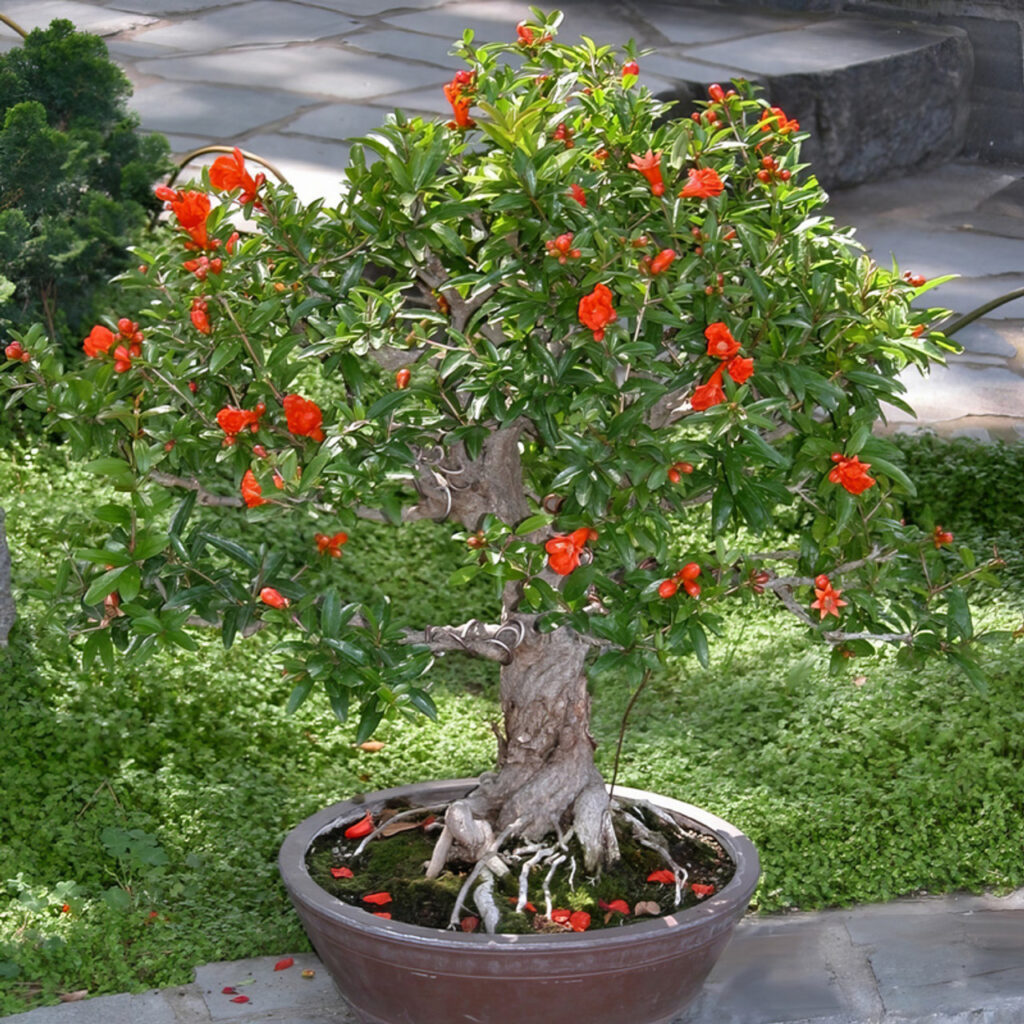
Disease Prevention and Management
Common Diseases Affecting Dwarf Pomegranate Trees
- Fungal Diseases
- Leaf spot
- Powdery mildew
- Root rot
- Verticillium wilt
- Bacterial Infections
- Bacterial blight
- Crown gall
- Viral Diseases
- Mosaic viruses
- Leaf curl viruses
Preventative Measures
Comprehensive Disease Prevention Strategy:
- Maintain proper air circulation
- Avoid overhead watering
- Use sterile pruning tools
- Remove fallen leaves and debris
- Practice crop rotation in the surrounding garden
- Select disease-resistant varieties
Treatment Options
Integrated Disease Management:
- Cultural Controls
- Proper pruning
- Soil drainage improvement
- Stress reduction techniques
- Chemical Interventions
- Fungicidal treatments
- Copper-based solutions
- Systemic fungicides
- Biological Controls
- Beneficial microorganisms
- Companion planting
- Natural fungal antagonists
Fruit Production and Harvesting in Dwarf Pomegranate Trees
Understanding Fruit Development: A Fascinating Journey
The fruit production of a dwarf pomegranate tree is a process that transforms delicate flowers into nutrient-rich fruits. This journey begins with a flowering process that showcases the tree’s reproductive capabilities.
The Flowering Process
Flower Characteristics:
- Color: Bright orange-red to deep crimson
- Shape: Trumpet-like, bell-shaped blossoms
- Blooming period: Late spring to early summer
- Pollination: Self-fertile and attractive to pollinators
- Duration: 2-3 weeks of active flowering
Pollination Dynamics:
- Self-pollinating capabilities
- Attracts bees, butterflies, and hummingbirds
- Wind can assist in pollen transfer
- Higher success with many trees nearby
Fruit Set and Development Stages
Fruit Development Timeline:
- Flower to Fruit Transition
- Petals fall after successful pollination
- Small green fruit begins to form
- Initial growth takes 4-6 weeks
- Fruit Growth Phase
- Gradual size increase
- Color transformation from green to reddish
- Total development time: 5-7 months
- Maturation Process
- Fruit gains distinctive pomegranate characteristics
- Skin becomes tough and glossy
- Internal seed development
Factors Affecting Fruit Production
Critical Influencing Elements:
- Sunlight exposure
- Consistent watering
- Proper fertilization
- Temperature stability
- Absence of pest/disease stress
- Genetic variety characteristics
Expected Yield for Dwarf Varieties
Yield Expectations:
- Young trees: 2-5 small fruits per season
- Mature trees: 10-20 fruits per year
- Fruit size: 1-3 inches in diameter
- Weight: Approximately 2-4 ounces per fruit
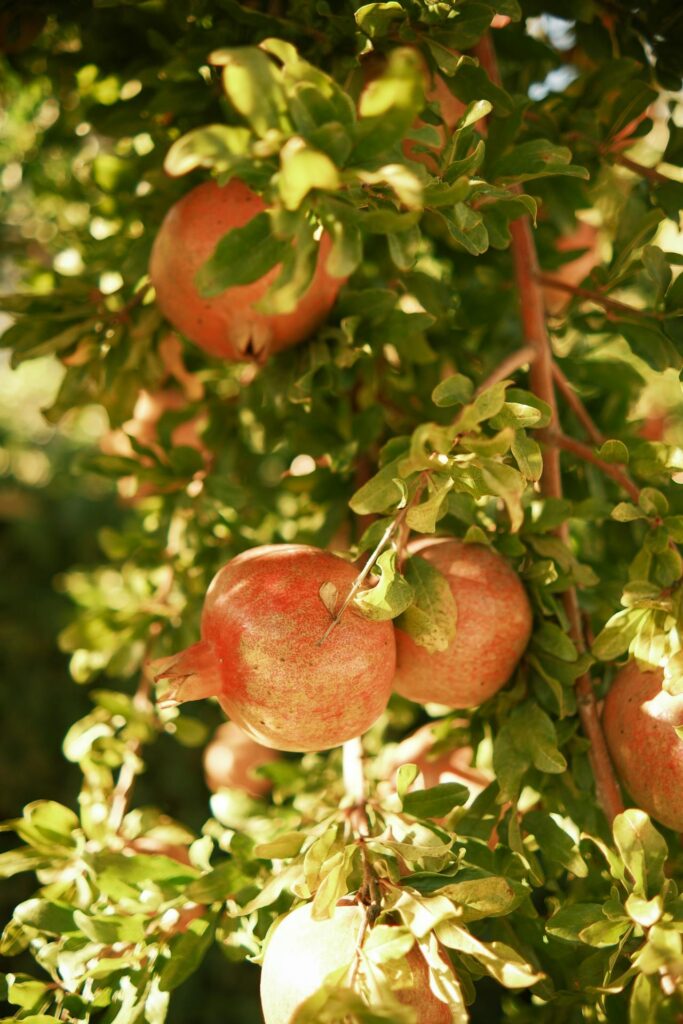
Harvesting Techniques: Precision and Timing
When to Harvest
Maturity Indicators:
- Color change: Deep red or pink-red
- Skin texture: Becomes firm and glossy
- Sound test: Produces a metallic sound when tapped
- Timing: Late summer to early fall
- Harvest window: 7-10 days of peak maturity
Harvesting Methods
Recommended Techniques:
- Careful hand-picking
- Use pruning shears
- Cut the stem close to fruit
- Avoid pulling or twisting
- Selective harvesting
- Pick mature fruits
- Leave developed fruits
- Assess individual fruit readiness
Post-Harvest Handling
Storage and Preservation:
- Room temperature: 1-2 weeks
- Refrigeration: Up to 2 months
- Cool, dark place: Optimal preservation
- Avoid moisture accumulation
Preparation Tips:
- Gentle washing
- Pat dry
- Remove any damaged fruits
- Store in breathable containers
Ornamental Uses of Dwarf Pomegranate Trees: Landscaping and Design Potential
Transforming Gardens with Compact Botanical Elegance
The dwarf pomegranate tree transcends mere fruit production. It is a versatile design element that can enhance landscape aesthetics. These wonders offer gardeners and landscape designers an extraordinary palette of visual possibilities. They combine structural integrity with stunning seasonal transformations.
Garden Design Considerations
Strategic Placement Options:
- Container gardens
- Border plantings
- Courtyard focal points
- Patio accent plants
- Rock garden installations
Design Principles:
- Use compact size for intricate landscape compositions
- Create visual depth and layering
- Introduce dynamic color variations
- Provide year-round visual interest
Landscape Integration Techniques
- Architectural Styling
- Create geometric patterns
- Use as structured border elements
- Develop symmetrical garden layouts
- Complement modern minimalist designs
- Mediterranean-Inspired Landscapes
- Mimic traditional Mediterranean garden aesthetics
- Pair with drought-tolerant companion plants
- Create xeriscaping environments
- Evoke regional garden design principles
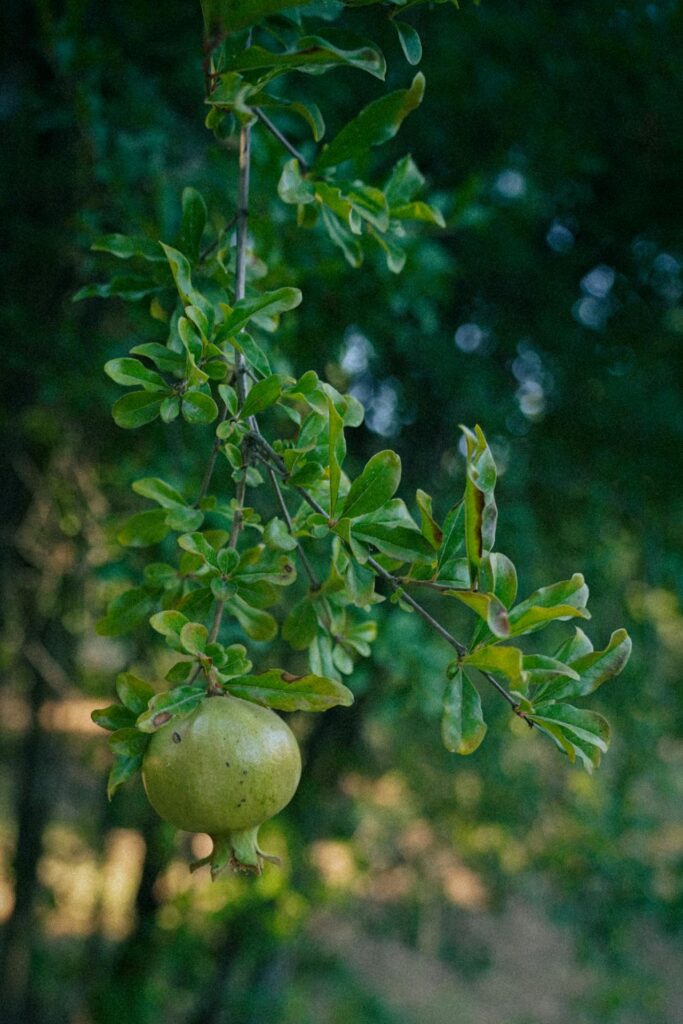
Decorative Features: A Visual Symphony
Flower Characteristics
Blossom Details:
- Color spectrum: Vibrant orange-red to deep crimson
- Bloom duration: 2-3 weeks
- Shape: Trumpet-like, bell-shaped
- Attraction factor: Highly appealing to pollinators
Flowering Periods:
- Primary bloom: Late spring
- Potential secondary bloom: Early summer
- Visual impact: Intense, short-lived spectacular display
Container Gardening Possibilities
Container Selection Criteria:
- Pot size: 12-16 inches diameter
- Material recommendations:
- Terracotta
- Ceramic
- Lightweight composites
- Drainage considerations
- Mobility potential
Placement Strategies:
- Sunny patios
- Balcony gardens
- Rooftop installations
- Indoor/outdoor transitional spaces
Aesthetic Appeal in Different Landscapes
Landscape Integration:
- Urban Small Spaces
- Vertical gardening
- Balcony beautification
- Compact courtyard designs
- Suburban Gardens
- Mixed border plantings
- Accent landscaping
- Structural garden elements
- Modern Minimalist Designs
- Clean lines
- Geometric placements
- Sculptural plant selections
Medicinal Uses of Dwarf Pomegranate Trees
Nutritional Powerhouse: Beyond Ornamental Beauty
The fruits of the dwarf pomegranate tree are a concentrated source of nutrients. Understanding the nutritional profile reveals why these compact trees offer more than aesthetic appeal.
Nutritional Profile of Dwarf Pomegranate Fruits
Macro and Micronutrient Breakdown:
- Calories: Approximately 83 calories per 100g
- Carbohydrates: 18.7 grams
- Fiber: 4 grams
- Protein: 1.7 grams
- Fat: 1.2 grams
Vital Micronutrients:
- Vitamin C: Powerful immune system support
- Vitamin K: Essential for blood clotting and bone health
- Potassium: Supports heart and muscle function
- Folate: Critical for cellular growth and DNA synthesis
Antioxidant Powerhouse
Unique Antioxidant Components:
- Punicalagins: Exceptionally potent antioxidants
- Anthocyanins: Provide deep red coloration
- Flavonoids: Support cellular protection
- Tannins: Contribute to potential health benefits
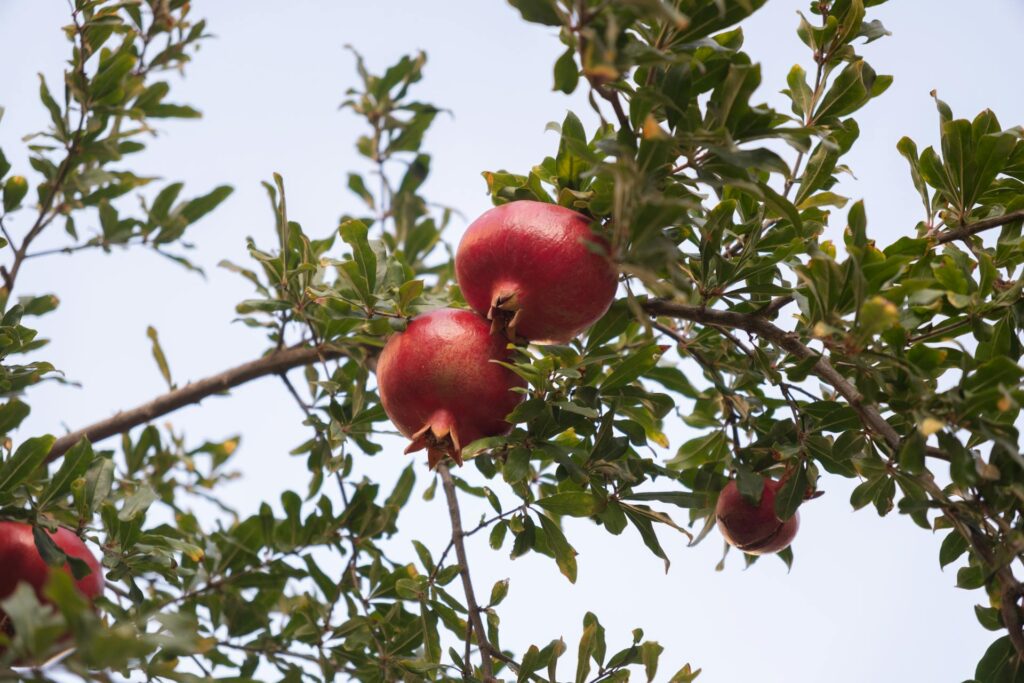
Medicinal Potential: Traditional and Modern Perspectives
Historical Medicinal Uses
Ancient Healing Traditions:
- Mesopotamian cultures: Used for digestive health
- Traditional Persian medicine: Treated inflammation
- Ayurvedic practices: Considered a holistic healing fruit
- Ancient Egyptian pharmacology: Used in complex medical preparations
Modern Health Research Insights
Potential Health Benefits:
- Cardiovascular Support
- May reduce blood pressure
- Potential cholesterol management
- Supports heart health
- Anti-Inflammatory Properties
- Reduces systemic inflammation
- Potential benefits for chronic disease management
- Supports immune system function
- Potential Cancer-Fighting Compounds
- Laboratory studies suggest potential anti-cancer mechanisms
- Preliminary research on cellular protection
- Requires further comprehensive human studies

Frequently Asked Questions About Dwarf Pomegranate Trees
Comprehensive Answers for Garden Enthusiasts
The world of dwarf pomegranate trees often sparks curiosity and raises many questions. This comprehensive FAQ section aims to address the most common inquiries.
Are Dwarf Pomegranate Trees Good for Small Gardens?
Absolutely! These trees are designed for limited spaces, making them ideal for:
- Urban gardens
- Balconies and patios
- Container gardening
- Small yard landscaping
- Courtyard designs
Key Advantages:
- Compact growth habit (3-6 feet tall)
- Versatile placement options
- Minimal space requirements
- Multi-purpose (ornamental and potential fruit production)
- Low maintenance compared to full-sized pomegranate trees
How Long Does It Take to Produce Fruit?
Fruit Production Timeline:
- Young trees: 2-3 years after planting
- Optimal production: 4-5 years
- Factors influencing fruiting:
- Growing conditions
- Variety selection
- Care and maintenance
- Climate compatibility
Can Dwarf Pomegranate Trees Grow in Containers?
Container Cultivation Insights:
- Highly suitable for container growing
- Recommended container characteristics:
- 12-16 inches in diameter
- Many drainage holes
- Lightweight, movable material
- Depth of at least 16 inches
Container Planting Tips:
- Use well-draining potting mix
- Ensure adequate sunlight
- Check watering more frequently
- Protect from extreme temperatures
- Potential for indoor/outdoor transitions
Are Dwarf Pomegranate Trees Pet-Friendly?
Caution Advised:
- Potential toxicity to pets
- Leaves and unripe fruits contain compounds that might be harmful
- Recommended precautions:
- Keep trees out of direct pet access
- Watch pets around the plant
- Consult a veterinarian if ingestion occurs
- Consider alternative plants for pet-heavy environments
Winter Care Tips
Cold Climate Strategies:
- Hardiness zones: Best in zones 7-10
- Protection methods:
- Move container plants indoors
- Use protective coverings
- Mulch root zone
- Avoid excessive moisture
- Reduce watering during the dormant period
Winter Survival Techniques:
- Location selection
- Sheltered areas
- Away from harsh winds
- Near building foundations
- Protective Measures
- Burlap wrapping
- Temporary greenhouse structures
- Frost cloth coverage
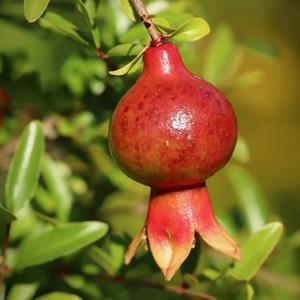
Conclusion: Why Dwarf Pomegranate Trees are a Must-Have for Garden Enthusiasts
Recap of Key Benefits: A Botanical Treasure in Miniature
The dwarf pomegranate tree represents a living testament to nature’s incredible design. It offers a combination of beauty, utility, and horticultural wonder.
Compact Size: Nature’s Masterpiece of Efficiency
The dwarf pomegranate tree is a solution that defies traditional landscaping limitations. These trees prove that botanical beauty doesn’t need expansive space. They are proof that gardening excellence isn’t measured by size.
Ornamental Value: A Visual Symphony
These trees are living works of art. Their trumpet-shaped flowers, green foliage, and miniature fruits offer an experience throughout the seasons. Each tree tells a story of growth, resilience, and beauty.
Fruit Production: Small but Mighty
The fruits of dwarf pomegranate trees are nutritional powerhouses. They represent a bonus to their ornamental qualities. They provide fruits packed with antioxidants, vitamins, and potential health benefits. Growing them creates a sense of satisfaction in the gardening experience.
Low Maintenance: Gardening Simplified
The dwarf pomegranate tree offers a refreshing approach to plant care. These trees need minimal intervention while providing visual and culinary returns. They embody the principle that gardening is a source of joy, not constant labor.